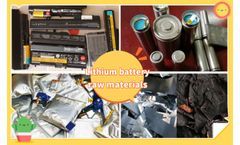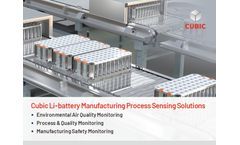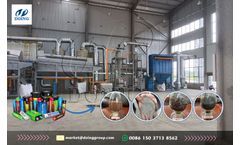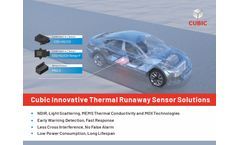Refine by
Lithium Ion Battery Articles & Analysis: This-Year
11 articles found
With the rapid development of the global new energy industry, the demand for lithium-ion batteries continues to rise, which also brings about the problem of handling a large number of waste batteries. ...
Abstract Lithium-ion batteries are primarily composed of cathode materials, anode materials, separators, and electrolytes. Among commercially available cathode materials, lithium cobalt oxide (LiCoO2), lithium manganese oxide (LiMn2O4), lithium iron phosphate (LiFePO4), and ternary composites are ...
In an era defined by climate urgency and mounting energy demands, lithium‑ion batteries have emerged as a linchpin technology—bridging the gap between intermittent renewables and reliable power access. ...
Lithium-ion forklift batteries, by contrast, offer transformative advantages: rapid charging, predictive maintenance capabilities, seamless integration with smart fleet management, and substantial reductions in carbon footprint. ...
The manufacturing of lithium-ion batteries requires a highly controlled environment, stringent safety protocols, and robust quality assurance mechanisms throughout every stage of production. ...
With "low cost, zero pollution, and high returns" as its core, DOING lithium ion battery recycling plant effectively processes scrapped lithium ion batteries and helps Indian companies quickly enter the blue ocean of lithium ion battery ...
In the production and application of lithium batteries, thermal runaway is a critical safety concern. Thermal runaway is a phenomenon in which the internal temperature of a lithium battery rises sharply due to overcharging, over-discharging, short circuits, or external high temperatures, triggering a chain reaction, leading to ...
In lithium battery production, NMP (N-Methyl pyrrolidone), a critical solvent, is widely applied to dissolve binders including PVDF (Polyvinylidene Fluoride) for preparing cathode slurry. ...
Glass fiber separator: widely used in lithium-ion batteries, lithium air batteries, high rate lithium-ion batteries, and aqueous zinc ion batteries, it is favored due to its high porosity, good liquid absorption, and high ...
N-doped carbon nanotubes, for example, are very electrocatalytic in ORR, and thus a candidate for fuel cells and metal-air batteries. Moreover, nitrogen/sulfur co-doped carbon nanotubes are also extremely electrochemically strong, which can be applied to supercapacitors. Energy Storage: Carbon nanotubes dotted with an anti-microbial layer work brilliantly in ...
Hybrid RTG: These cranes combine diesel engines with energy storage systems, such as lithium-ion batteries. The batteries store energy during operations, which can then power the crane during periods of low activity, reducing fuel consumption and emissions. ...









